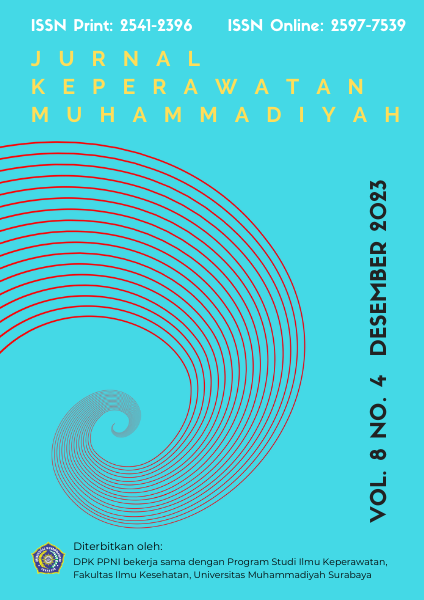Pelaksanaan Kepatuhan Discharge Planning Pasien Gagal Ginjal Post Hemodialisa Terhadap Nilai Hemoglobin Di RSUD Dr. H. Chasan Boesoirie Ternate
DOI:
https://doi.org/10.30651/jkm.v8i4.20313Abstract
Abstract :
Background: Chronic kidney disease is an irreversible, progressive disorder whose symptoms appear gradually. CKD is also a health problem that often occurs in society, the prognosis is poor, the costs are high, and many patients cannot receive a kidney transplant so they have to undergo hemodialysis and experience changes in blood components and electrolytes due to dialysis (Abdulla, JE, et al, 2020) .Discharge planning is obtained from the interaction process when professional nursing, patients and families collaborate to provide and organize the continuity of nursing needed by patients. Planning must be centered on patient problems, namely prevention, therapeutic, rehabilitative, as well as actual routine nursing until the patient is at home (Nursalam, 2015).Apart from remembering that one of the functions of the kidneys is to produce the hormone erythropoietin which is useful in the formation of red blood cells, which is directly related to hemoglobin levels, and considering the role of hemoglobin as a transporter of oxygen throughout the body's tissues, it is deemed necessary to carry out research related to hemoglobin in patients. kidney failure.Method: quantitative with a quasi-experimental approach with a one group Pratest Posttest design and the design used is a time seriesResults: Statistically there was no significant change in the mean value of hemoglobin levels before and after the chart planning intervention as indicated by the p value = 0.309 (p > 0.05).
Downloads
Published
Issue
Section
License
Copyright (c) 2023 Nur santi Anwar, Nunung IMN Doa

This work is licensed under a Creative Commons Attribution-ShareAlike 4.0 International License.
- Penulis tetap memegang hak atas karyanya dan memberikan hak publikasi pertama kepada jurnal ini yang secara simultan karya tersebut dilisensikan di bawah:Â Creative Commons Attribution-ShareAlike 4.0 International (CC BY-SA 4.0)













